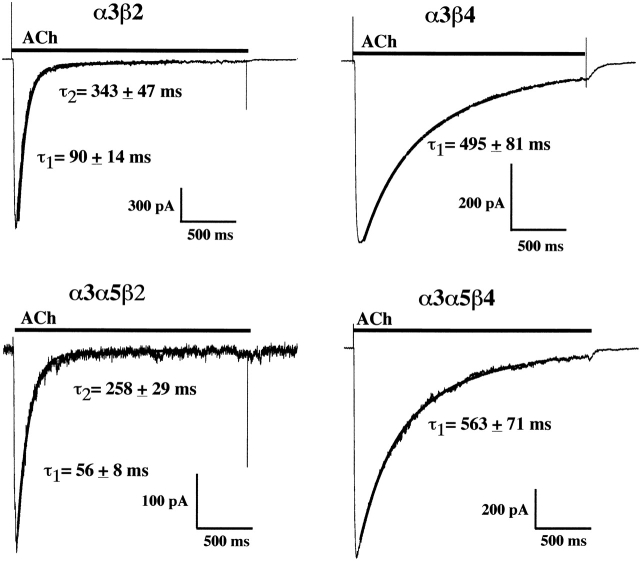Figure 8.
α3 AChRs containing the β2 subunit desensitize faster than those that contain the β4 subunit. Currents evoked by ACh (300 μM) in each α3 cell line are shown along with the fit of the current decay to either a single or double exponential function. Both α3β2 and α3α5β2 AChRs exhibited desensitization with a very rapid component having time constants of <100 ms. Some of the α3β2 cell currents could be fit by double exponential functions (5 out of 7) with the faster component matching the cells which had only a single exponential decay as well as a slower component that was several hundred milliseconds. Some of the α3α5β2 AChR currents (7 out of 12) had a small amplitude slower component. Both the α3β4 and the α3α5β4 AChRs had currents that desensitized much slower than the β2-containing AChRs and were always best fit by single exponential functions which had time constants of decay of ∼500 ms. All desensitization time constants were determined for currents that were recorded at −60 mV.

